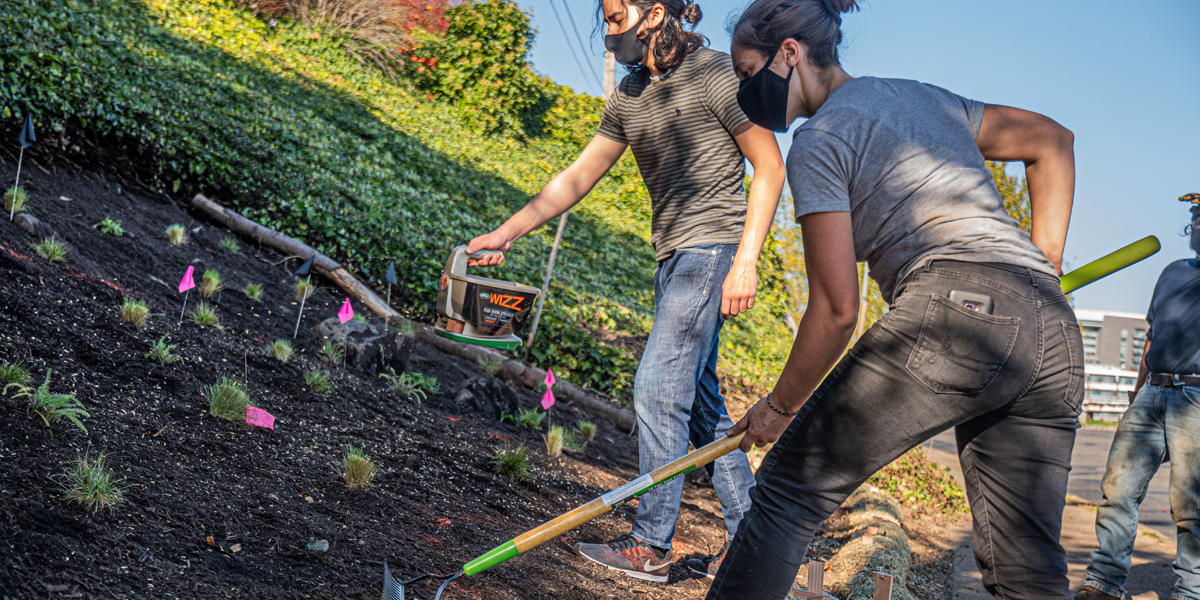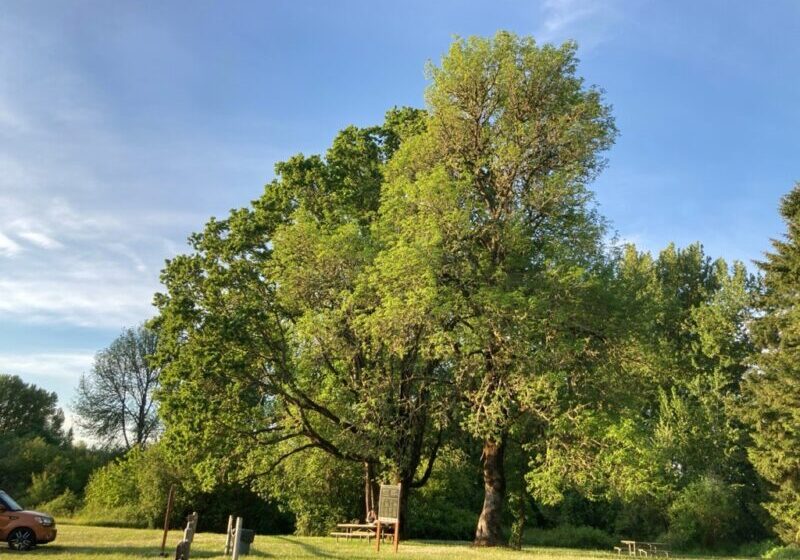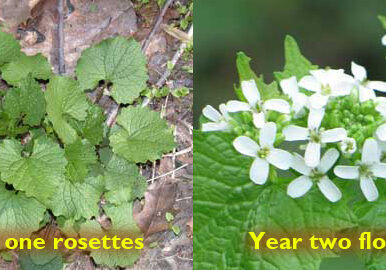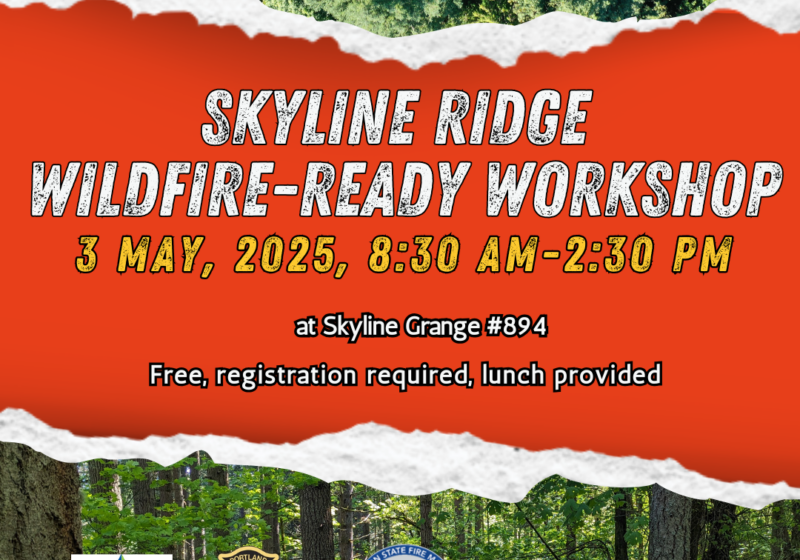(Stormwater Stars planting event. Photo by Corey Shelton)
Covid-19 didn’t stop residents from getting out on their properties and into local natural areas to connect with the land and lend a hand. It also didn’t stop urban partners from continued collaboration and innovation focused on better addressing challenging urban conservation issues.
We developed seven new conservation plans this year with interested residents. Some of these plans include multiple residents working together across property boundaries to improve the health of their combined properties. In addition to plan development, we coordinated funding and/or provided technical assistance to six conservation projects to implement on-the-ground conservation work including the installation of native plants, stormwater management improvements, root wad placements, and invasive species removal. Funding to complete this work was provided by Oregon Watershed Enhancement Board (OWEB), Metro, site landowners, and the District.
This year, District staff developed, shared, and presented research on Portland’s Stormwater Permitting, Policy & Processes: A Stakeholder & Geospatial Analysis at the Urban Ecosystem Research Consortium of Portland/Vancouver. Portland’s West Hills have many steep and landslide-prone slopes. The City of Portland is a nationally-recognized leader in stormwater management with strategies that show why working at the sub-watershed level – a smaller geographic scale — is more effective for planning, implementing and evaluating watershed improvements. Despite the city being at the leading edge, Portland’s West Hills still have significant problems managing stormwater, which impacts the health and water quality of its many creeks. Watershed health may further decline as local stormwater systems become increasingly less able to manage the annual volume of stormwater. This reduced ability is caused by a number of factors which vary by sub-watershed: more new buildings, paved areas, and sealed surfaces that stormwater can’t pass through; degraded riparianRiparian areas The land alongside a stream, creek, river, or floodplain zones with decreased ability to absorb and filter stormwater; climate change producing more intense storm events; and aging, failing, and/or inadequately-sized grey and green stormwater infrastructure (i.e. pipes, retention basins, swales, etc.). Additionally, with stormwater systems in disproportionate condition across the city, equity, sustainability, and livability questions arise. This research sought to uncover barriers and opportunities for improving stormwater conditions through diverse stakeholder involvement.
Along with partners, we celebrated the 9th year of the Canopy Weeds Program with 411 participating landowners and 34,186 trees cleared of invasive vines. Portland Fire & Rescue joined the partnership, adding wildfire risk reduction to the suite of benefits offered to program participants. The Canopy Weeds Program has historically provided free treatment of invasive ivy and clematis species in neighborhoods adjacent to Forest Park. The goal of this important program is to save trees, slow the spread of invasive weeds and protect the health of Forest Park as well as a segment of the wildlife corridor that connects Forest Park to the Oregon Coast Range. This year, we piloted a fee-for-service model with a sliding needs-based scale to help fund and increase the number of on-the ground weed removal projects. In addition, we helped outreach about wildfire risk reduction home assessments that are available through Portland Fire & Rescue. The Canopy Weed Program work is completed by Forest Park Conservancy’s Green Jobs Interns. The Green Jobs Training and Internship Program provides BIPOC (Black, Indigenous, and People of Color) youth and young adults with hands-on professional experience and support to pursue a career in the conservation and natural resources field.
Urban educational demonstration projects, native habitat gardens, porous walkways, streamside enhancements, culvert removal, signage, and retention basins continue to benefit soil, water, local wildlife habitat, and neighborhood greenspaces. These projects engage and connect diverse communities with conservation practices and provide access to nature in areas that have been historically underserved by the District through volunteer events, tours, signage, and local neighborhood enhancements.
This year’s demonstration projects include a streamside area that’s being restored and used as an environmental education site by a community of faith. Another project includes meadowscaping, forestland and stormwater improvements adjacent to an important “safe route to school” pathway that serves diverse and low-income youth and adults. Pathway users regularly volunteer to maintain the demonstration plot at work parties and educational events.
Despite initial restrictions on in-person gatherings due to COVID-19, the Stormwater Stars Program was able to conduct design and build workshops by adding health and safety protocols. Program organizers hosted 3 events that engaged 55 people through hands-on planning and installation workshops for yard-scale stormwater management techniques. In addition, partners assessed 23 sites for stormwater upgrades, providing each with recommendations for their properties. They also launched a new website with photographs and descriptions of past workshops to inform and inspire more people to install stormwater management features. In April 2021, program managers also began planning growing the program into Washington County.
New and continued partnerships with local watershed councils, universities, local agencies and nonprofits continue to be a critical way of achieving conservation objectives in the urban realm in a strategic and effective way. With modifications for COVID-19 pandemic gathering limits, The Tryon Creek Watershed Council was able to hold a watershed-wide event and even grew access to the event to those who were unable to attend in-person; participants were invited to conduct restoration work in their own locations as part of the event. The West Willamette Restoration Partnership continued its important work of monitoring restored areas with Wisdom of the Elders and District staff. Lastly, a new partner that we recognized this year for stepping up in a big way is Neighbors West Northwest. This partner quickly, thoughtfully, and seamlessly took on a fiscal agent role for a critical partner, the Westside Watershed Resource Center, when the Center had an abrupt need to change their fiscal agent.
For more information about our work in urban neighborhoods, contact Urban Conservationist, Mary Logalbo, at mary@wmswcd.org.



